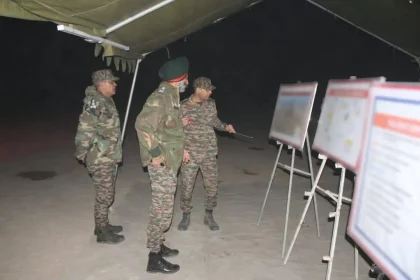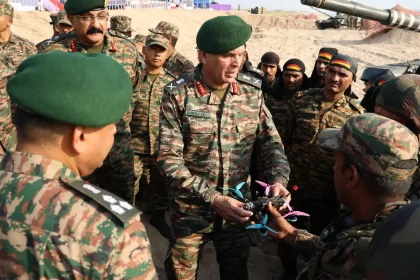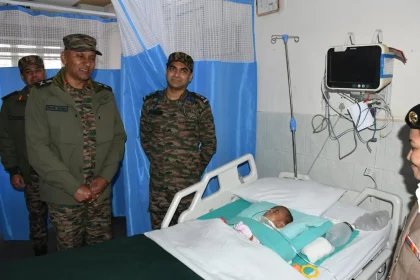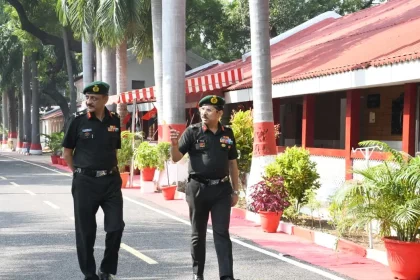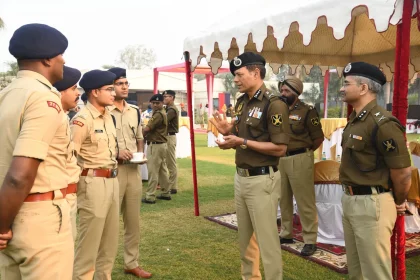Black Charger Eagles Demonstrate Exceptional Technical Skill With 24-Hour Continuous Engine Change Exercise
The effort by the Black Charger Eagles stands as a testament to the grit, professionalism, and technical excellence of Indian…
NDA Passing Out Parade for 149th Course to Be Held on 30 November 2025
As the Autumn Term 2025 draws to a close, the nation eagerly awaits the ceremonial march of the 149th Course—a…
Lieutenant General Dhiraj Seth Reviews Culminating Phase of Exercise Trishul at Madhavpur Beach
Exercise Trishul reaffirms the Indian Armed Forces’ readiness to operate jointly and decisively, projecting power across domains to meet evolving…
Lt Gen Pratik Sharma Commends Medical Excellence During Visit to Northern Command Military Hospital
Lt Gen Pratik Sharma Reviews Military Healthcare, Lauds Dedication of Northern Command Medical Staff.
Lt Gen Anoop Shinghal Reviews Standardisation Exercise at Selection Centre East
Visit reinforces transformational reforms in the officers’ selection process.
DG BSF Daljit Singh Chawdhary Interacts with IPS Officers of 74 & 77 RR Batch in New Delhi
Session highlights BSF’s history, operational role, challenges, and future-ready border management strategies.

